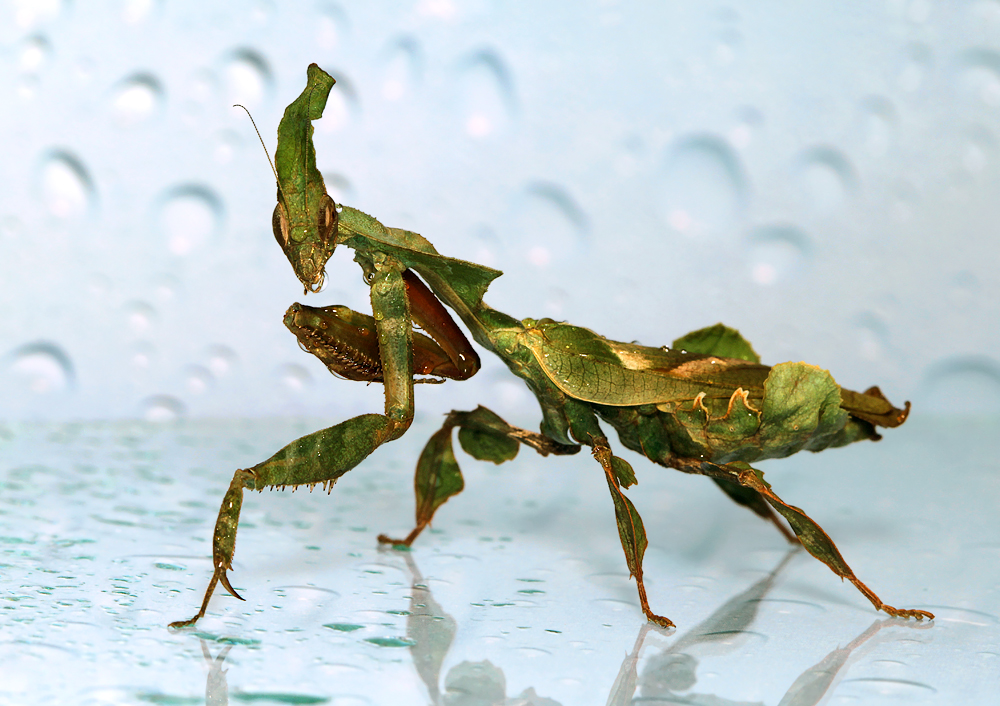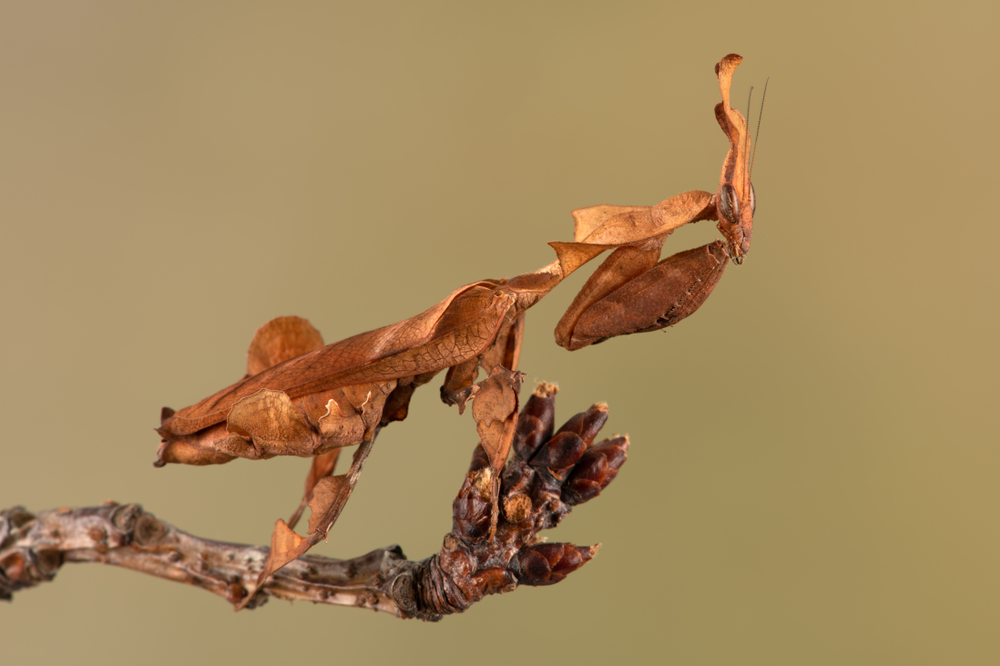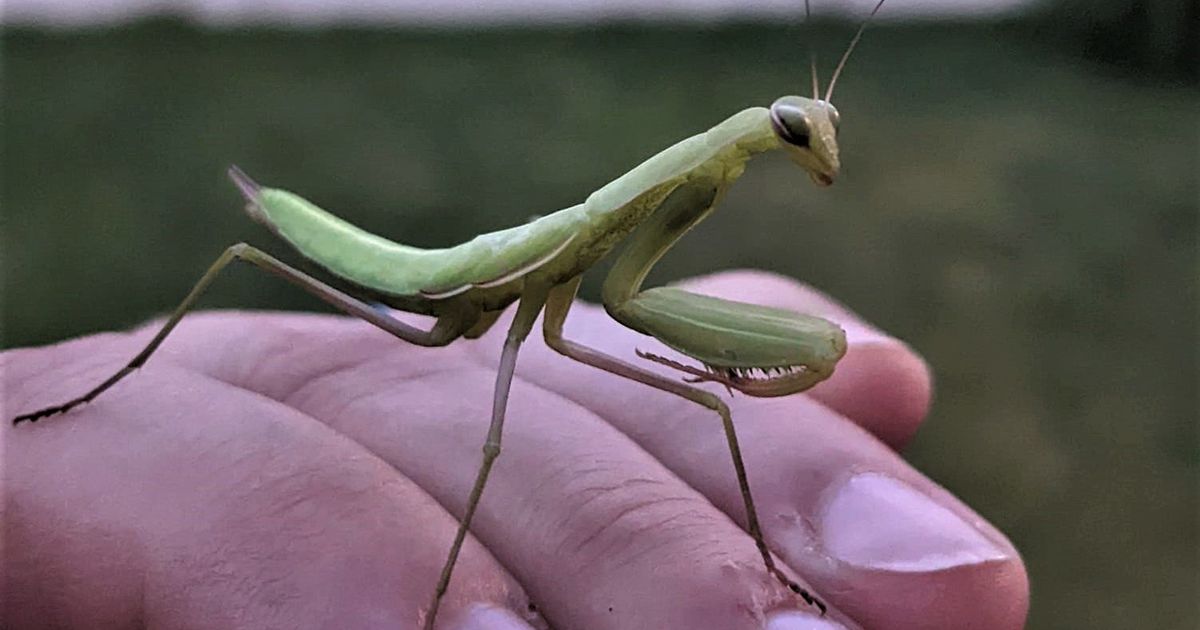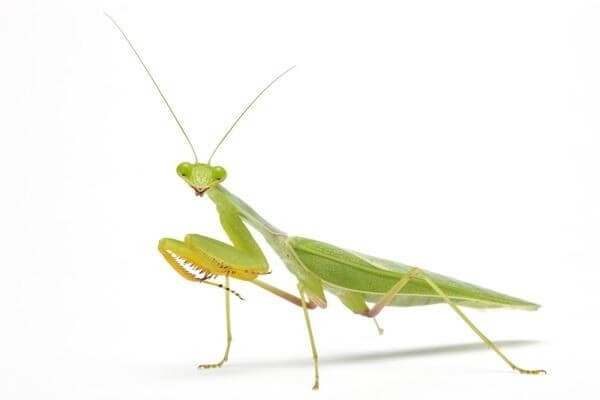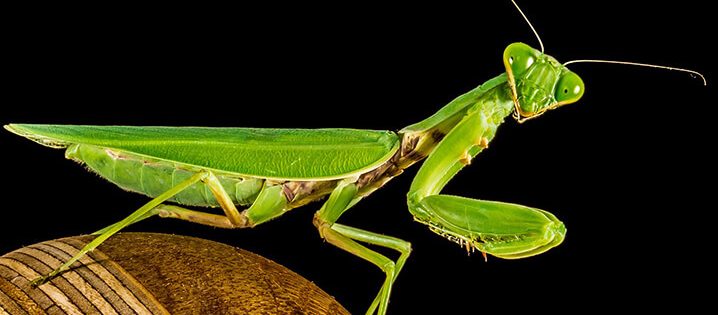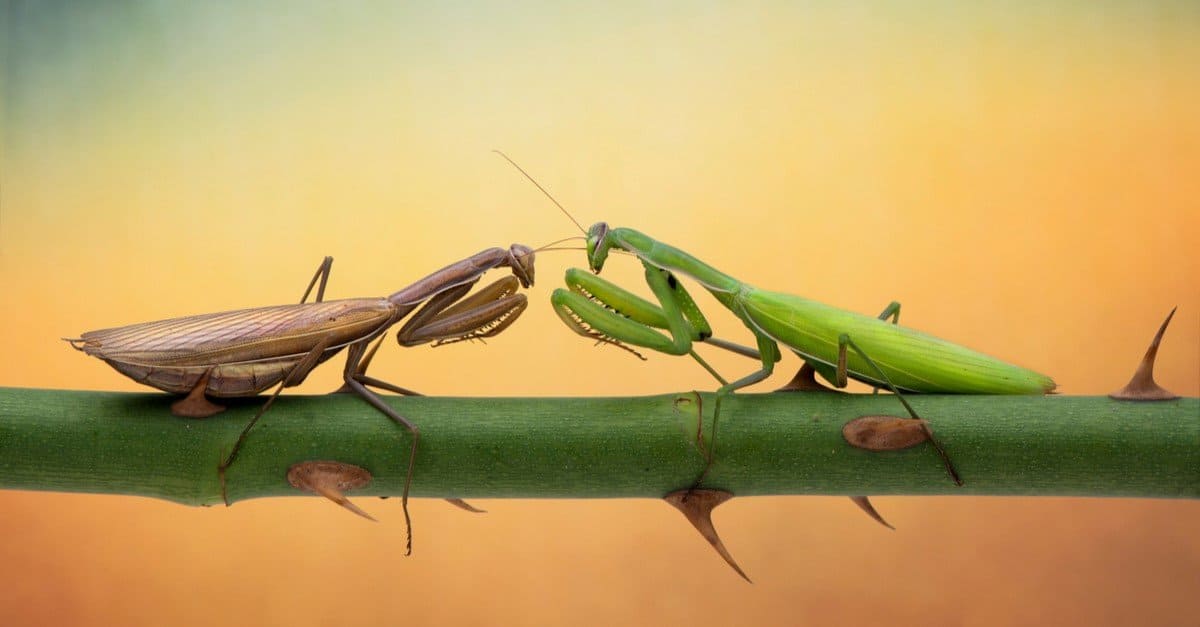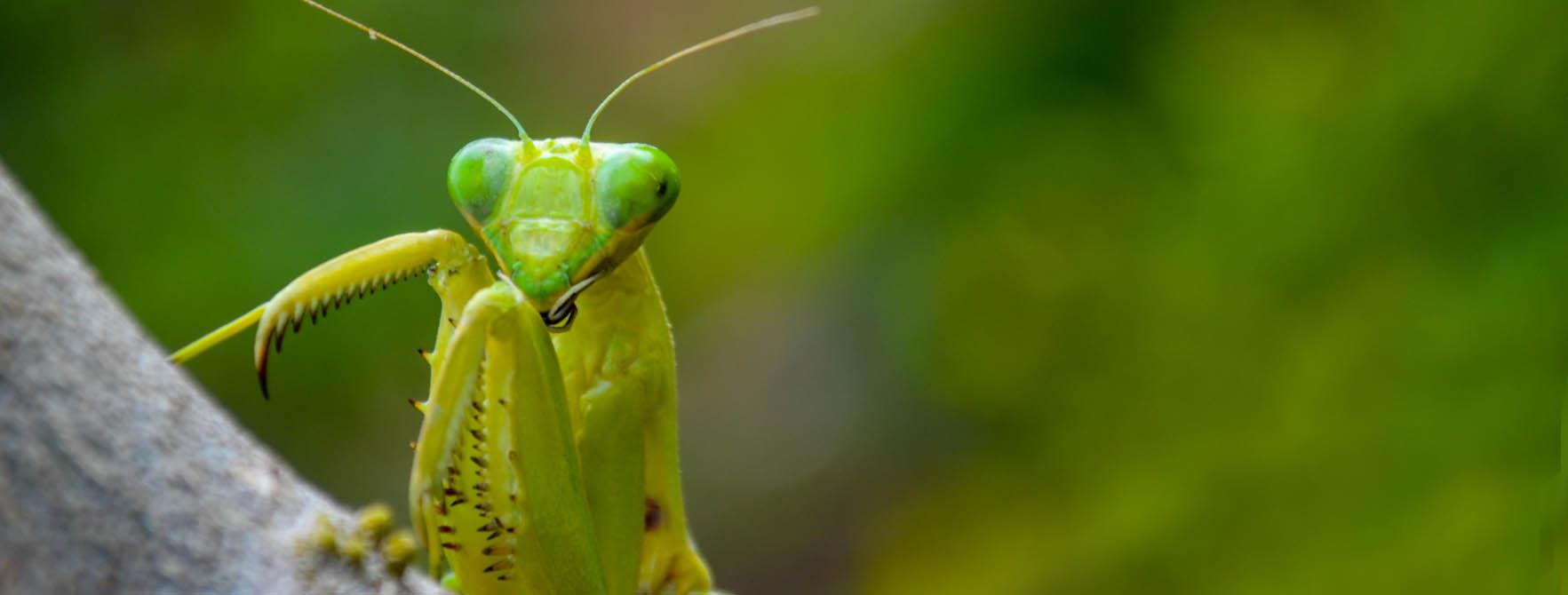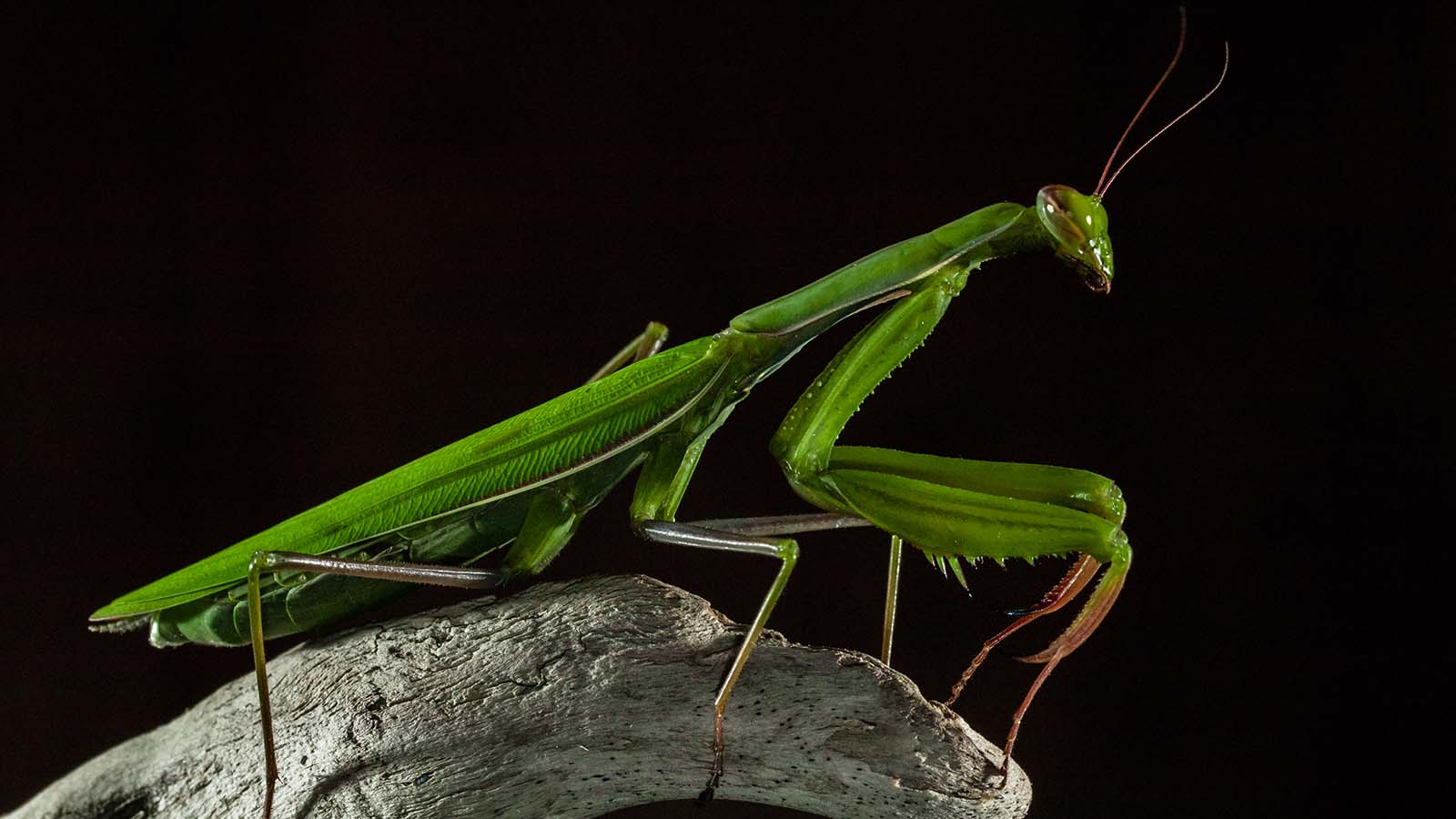Ghost Mantis Mysterious Rainforest Creature
African praying mantis species known as the Ghost Mantis (Phyllocrania paradox) is mostly found in Cameroon and the Democratic Republic of the Congo.
Its name is derived from its light coloring and flattened body form, which let it blend in with the foliage and bark of trees.
Ghost Mantis Appearance
The length of an adult Ghost Mantis is usually between 2-3 inches (5-7.5 cm), and their hue can range from pale tan to light green to brown.
On their wings and legs, they could have darker patterns as well. Ghost Mantises have a flattened body form that aids in their ability to blend in with other plants and tree bark.
Also, they have specially designed long, slender legs for grabbing prey. A Ghost Mantis’s head is long and triangular in shape, with two powerful mandibles for grabbing and biting prey, as well as big, compound eyes.
They are famous for their distinctive hunting technique, which entails rocking back and forth to resemble the movement of leaves in the wind. This enables them to blend in with their environment and ambush potential victims that might approach too closely.
Is ghost mantis friendly?
The Ghost Mantis is not a particularly sociable or pleasant insect, like the majority of praying mantises.
They are not hostile to people, but because they are primarily interested in hunting, they could regard any movement as a potential prey item. As a result, handling them or attempting to contact them too intimately is typically not advised.
It’s crucial to remember that they are still wild animals and should be handled carefully and with respect.
Can ghost mantis fly?
Flying is a feature of Ghost Mantises (Phyllocrania paradox). Both male and female Ghost Mantises have wings, and while females have shorter wings than males, which makes them less skilled fliers, they can still utilize their wings to fly short distances if needed.
Although they are not good flyers, as I already indicated, they are more likely to rely on their walking and jumping prowess to move around and hunt prey.
How long do ghost mantises live?
A Ghost Mantis lifespan can vary depending on a range of variables, including its environment, nutrition, and genetics.
Adult Ghost Mantises typically have a lifespan of 6 months to 1 year, with females often having a little longer lifespan than males.
What does a ghost mantis eat?
Ghost Mantis is primarily predatory, carnivorous insects that eat a variety of living insects as food. They are reported to eat a variety of prey in the wild, including grasshoppers, crickets, flies, moths, and other easily captured insects.
A variety of live insects, such as crickets, fruit flies, house flies, mealworms, waxworms, and moths, can be fed to Ghost Mantises as pets.
Is ghost mantis poisonous?
Ghost Mantises, also known as the Phyllocrania paradox, is not toxic to people or other animals.
Despite the fact that they are predators and capable of murdering their victims with relative ease, they lack any venom or toxins that would allow them to do so or to protect themselves.
Ghost Mantises, like all mantises, have powerful, pointed forelegs that they use to grab and hold their prey; if they were to grab someone’s skin, they might get hurt.
A Ghost Mantis bite can be unpleasant or shocking even though it is not deadly or hazardous in and of itself.
Can a mantis hurt a human?
Since mantises are not venomous or poisonous, and their bites are not known to be deadly, they are not generally regarded as dangerous to people.
Mantises can hurt people, though, just like any wild animal, if they feel threatened or if they are mistreated.
What is the rarest praying mantis?
The rarity of a specific species of praying mantis can depend on a number of variables, including its distribution, natural habitat, and level of conservation.
The Stenophylla Cornigera is one species that is frequently cited as being among the rarest. A praying mantis species known as Stenophylla cornigera is regarded as being extremely rare and challenging to locate in the wild.
Due to its distinctive form and color, it is also known by its popular name, the Wandering Violin Mantis.
How much are ghost mantis
The price of Ghost Mantis can vary depending on where you are purchasing them from and their availability.
In general, Ghost Mantis tend to be relatively affordable compared to some other mantis species, with prices typically ranging from $15 to $30 USD per individual, although prices can sometimes be higher for particularly rare or desirable color morphs.
What is the friendliest mantis?
Sphodromantis Lineola is one species that is frequently cited as being among the friendliest.
A species of praying mantis known as Sphodromantis Lineola, commonly called the African Lined Mantis or the African Mantis, is renowned for its generally placid and docile nature.
How do you tame a ghost mantis?
Praying mantises, including Ghost Mantis, is not domesticated animals and cannot be “tamed” in the same way that a dog or cat can be.
However, with patience and persistence, it is possible to train a Ghost Mantis to tolerate handling and become more comfortable with human interaction.
The key to working with a Ghost Mantis (or any mantis) is to approach them with care and respect and to let the mantis set the pace for any interactions.
Are ghost mantes dangerous?
Ghost Mantis is not thought to pose a threat to people. They are not poisonous, and their bites are not hazardous to humans, despite the fact that they do have incisive spines on their forearms that they can use to protect themselves if they feel threatened.
Are praying mantis good luck
Praying mantises are regarded as lucky and prosperous emblems in many cultures. A praying mantis is seen in some cultures as a portent of good things to come.
The praying mantis has been depicted frequently in literature and art and has served as a metaphor for patience, mindfulness, and spiritual development.
It’s crucial to keep in mind, too, that many cultures and traditions have varying perspectives on and interpretations of the praying mantis’ symbolic meaning.
FAQS
Are ghost mantes endangered?
The Ghost Mantis is not currently considered to be endangered. They are relatively widespread throughout their native range in sub-Saharan Africa and are also commonly bred in captivity for the pet trade.
How many praying mantis species are there
There are over 1,800 species of praying mantises (order Mantodea) in the world, and new species are still being discovered and described by scientists.
These species are found on every continent except Antarctica, and they come in a wide range of sizes, shapes, and colors.
How often does a praying mantis need to eat
A praying mantis’s feeding schedule might vary depending on its age, size, species, activity level, and surroundings. Praying mantises are typically carnivorous creatures that need a regular supply of live prey to survive.
Younger mantises could require feeding more regularly, such as every day or every other day, whereas adult mantises can typically be fed every two to three days.
Individual mantises may have varying appetites and feeding habits, so it’s crucial to constantly study your mantis to understand its precise nutritional demands.
Are mantis intelligent?
It is uncommon to conceive of praying mantises as intelligent in the same sense that we think of intelligent behavior in people or other animals. Their behavior is mostly governed by instinct and reflexes because they have small brains and poor cognitive capacities.
Mantises can, nevertheless, display a variety of fascinating and complicated behaviors that imply some level of intelligence and the capacity for problem-solving.
Mantises are fascinating and intriguing creatures with a lot to teach us about the natural world, despite the fact that they are not often thought of as highly clever creatures.

